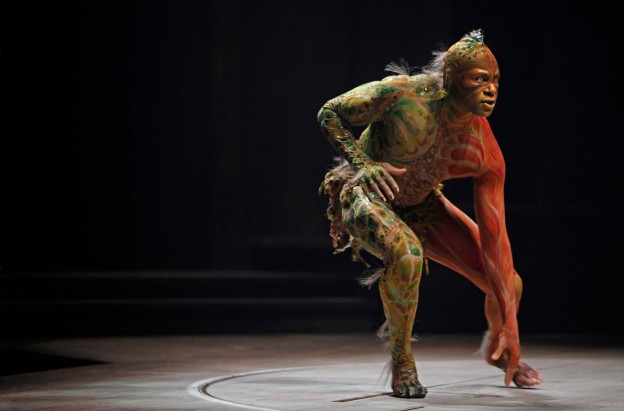Forget about Lucy as the missing link! Literature professors and costume designers have a long history of viewing Caliban as a character who fills an evolutionary void between man and beast.
Charles Darwin published his On the Origin of Species 1859. Less than 15 years later, in 1873, a professor by the name of Daniel Wilson published a paper entitled “Caliban: The Missing Link.” In the paper, he describes the possibility of the existence of the now-infamous “missing link” between man and apes. He then posits that such a character would likely look a lot like Shakespeare’s Caliban, a non-human, savage, but still intelligent and teachable being. The idea became very popular and had great influence on Caliban’s portrayal on the stage.
The relationship between Caliban and evolution still holds sway today! Glen Love is a modern professor who specializes in the relationship between literature and the life sciences, especially biology. Love finds many interesting parallels between modern scientific theory and Shakespeare. He even claims that a quote from The Tempest, “a born devil, on whose nature / Nurture can never stick,” actually coined the phrase “nature vs. nurture”, a popular concept in modern psychology. In a recent paper, Love also describes Caliban as a Darwinian figure who fits somewhere between man and animal.
Caliban’s performance history reflects these evolutionary themes. According to one performance history blog, the character of Caliban faded to the background of the play during the 18th century. Several musical adaptations, including one called the Operatic Tempest, put more emphasis on singing and dancing and cut down Caliban’s lines and screen time. After Darwin’s Origin of Species was published, however, there was a marked shift in Caliban’s portrayal. He became a much more interesting character as the world was introduced to the idea of humans having primitive, primal ancestors. In 1857, a costume for Caliban was a man-shaped form clothed in animal fur, and during the 1890s an actor named F.R. Benson became one of the first method actors when he reportedly spent hours watching monkeys and apes at the zoo in order to prepare for the role.
During the 20th century, the interpretation of Caliban shifted again, to a more imperialistic role. Ironically, this imperial/colonial interpretation was almost certainly more at the heart of what Shakespeare intended Caliban to represent. After all, The Tempest preceded Darwin’s theory of evolution by over one hundred years. However, some evolutionary interpretations still prevailed. According to one account, James Earl Jones took on the role of Caliban dressed in a costume covered in scales. Although a reptilian path was not exactly part of humans’ evolutionary history, the natural, animalistic themes are still there. Unfortunately, I was unable to find any photos of this portrayal. That’s something I would have liked to see.
Citations:
Love, Glen A. Configurations, suppl. Ecocriticism and Biology![]() 18.1/2
18.1/2![]() (Winter 2010): 121-140,201.
(Winter 2010): 121-140,201.

